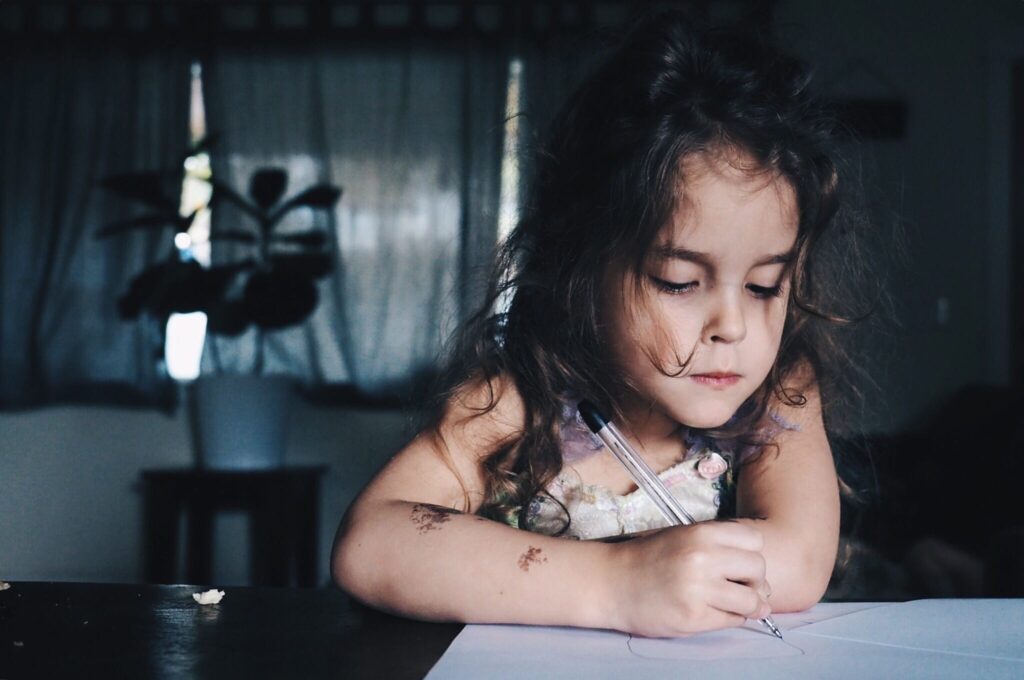As a new mom, I can relate to the social media flood about the challenges of being a #workingparent with young children during the coronavirus pandemic. Mixed with the giggles of my four-month-old son while my husband and I work from home, I hear outside my window a cacophony of neighborhood children laughing, crying, and screaming “Mooooom!” Sounds of our new reality.
Before the pandemic, I was just returning to work, and struggling to find affordable, high-quality early childhood education. Yet I knew I was among the most privileged in an early childhood landscape that leaves families to rely on an ad hoc roller coaster of privilege and luck. Now, along with the creeping terror in the back of my mind about the coronavirus, I’m angry about the ways in which the U.S.’s slapdash approach to early childhood education (ECE) could end up exacerbating inequity because of this crisis, particularly for young children of color and young children from low-income families. And maybe this crisis will make policymakers finally confront the U.S.’s need for a much stronger, much better funded, much more valued ECE system. Hopefully, this crisis makes real for policymakers what so many Americans struggle with every day: the inability to access reliable, affordable ECE and how it affects a family.
For far too long, the U.S. has gotten away with underfunding ECE and providing insufficient access and quality of ECE for children of color and children from low-income backgrounds. Now that negligence has come home to roost. The coronavirus pandemic and its economic aftermath should lead the government to face the fact that ECE is a backbone of our economy that needs more funding and better treatment of its ECE workforce. Here are two ways the system is failing American families:
1. Families have been denied a secure ECE system, and childcare workarounds aren’t working.
Without the security of reliable and accessible ECE system, millions of parents from low-income backgrounds rely on grandparents (who are among the most at risk from COVID-19) because they live in childcare deserts or cannot afford ECE. Otherwise, parents rely on a patchwork of ECE providers (who are also among the most at risk from COVID-19). Now, parents and guardians of young children are left scrambling to find alternatives because they can’t afford childcare while their income is disrupted, they don’t want to jeopardize grandparents’ health, and many ECE providers have shut their doors.
2. Marginalized ECE providers are between a rock and a hard place.
Many states are asking ECE providers to stay open so that critical healthcare workers can go to work, which poses health risks and logistical challenges: A huge number of ECE providers are women of color who are balancing the need for income with the risk of contracting COVID-19 without paid sick leave or healthcare benefits, and have very low incomes (significantly lower than K-12 teachers, and lower than White ECE providers) — all while often having children of their own who are now home from school.
On the other hand, some states (such as Oregon) have opened public schools as childcare centers for essential workers, which is taking away business from childcare providers. And as families of non-essential workers withdraw their children from ECE due to the COVID-19 crisis, many providers have suddenly lost their incomes and/or businesses and aren’t sure if they’ll ever reopen: In a recent survey, 30% of childcare providers from across the country said their businesses would not survive more than two weeks of closure without significant public investment and support. Unlike the K-12 system, which is publicly funded from the top down and provides K-12 teachers with salaries and benefits while school systems close, ECE is largely comprised of businesses that rely on payments from individual families and government subsidies that barely cover costs. When the COVID-19 crisis is over, there may be drastically fewer childcare providers left, making ECE even harder for underserved families to access. If one-third of childcare centers were to permanently close, it would leave 4 million young children without care. Imagine the outcry if the pandemic left one-third of K-12 schools permanently closed. Yet this wouldn’t happen because we publicly fund the K-12 system in a way that we neglect to fund ECE.
Now’s the time to build a more equitable system.
The federal and state governments should enact policies now that make sure all young children are safe and nurtured during this pandemic — and they should see this as a wakeup call to finally, sufficiently fund an equitable ECE system that guarantees universal, accessible, and high-quality ECE for all families of children ages zero to five after the pandemic. Federal and state policymakers should pay attention to the deluge of advice coming their way to address the many nuances and complexities of the problem: ECE advocates are calling for economic relief for the childcare sector and safety measures and financial support for providers and families. Our government must support an equitable, reliable system that should have existed decades ago.
When the COVID-19 crisis finally ends, the U.S. will be left with an ECE system that is even less equitable, or policymakers can build one that increases access and quality to help our nation recover.





